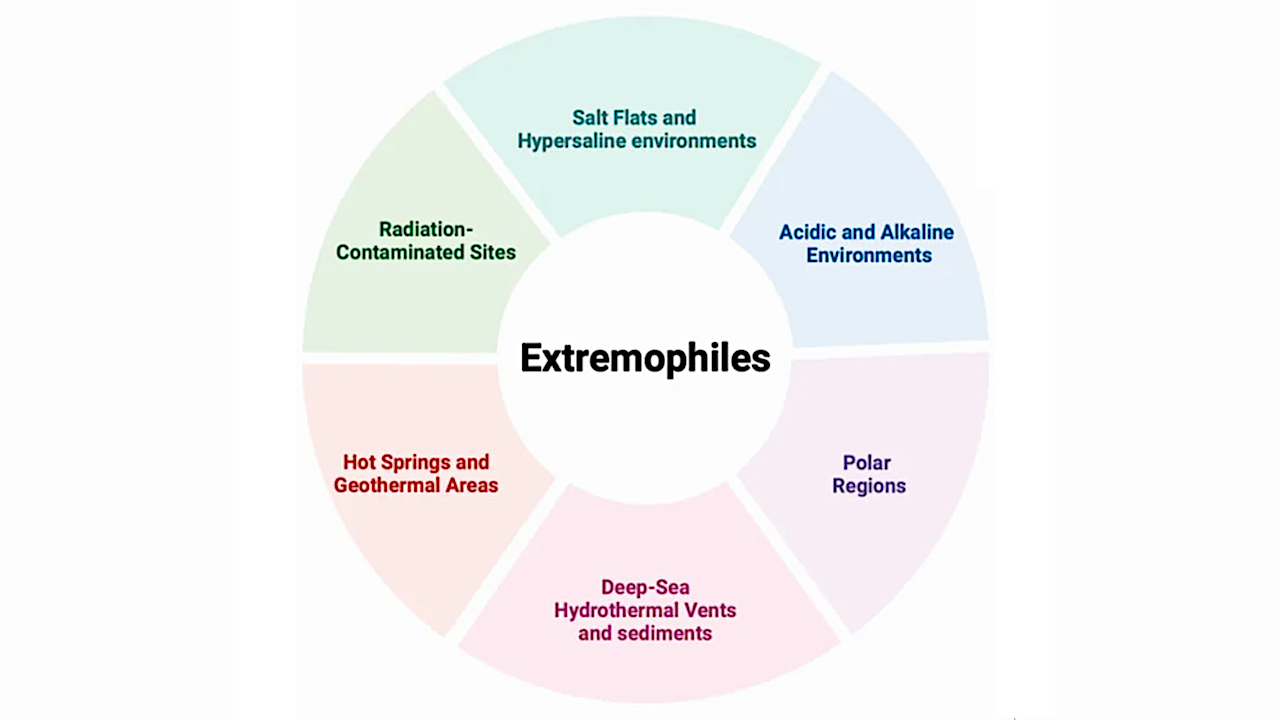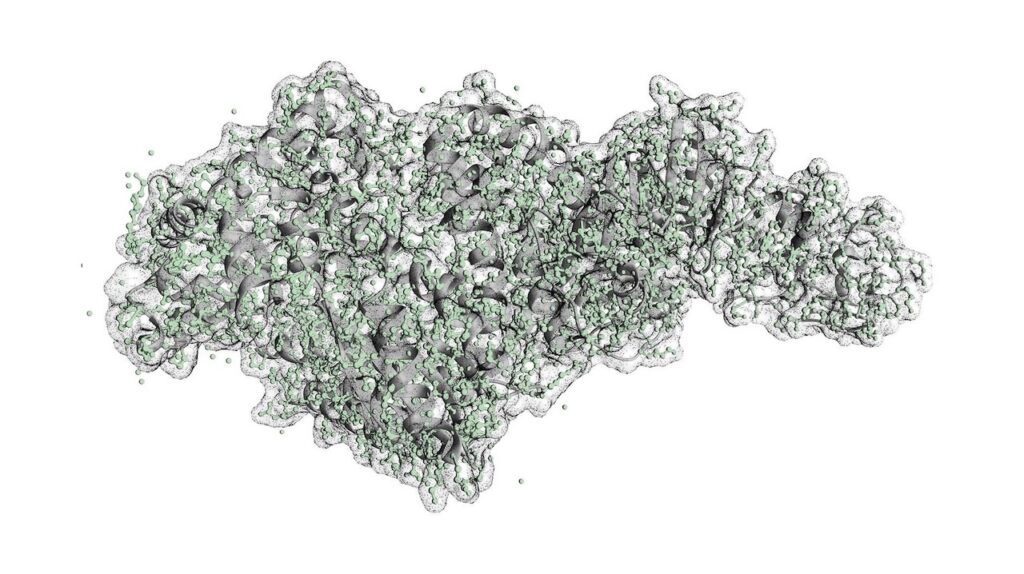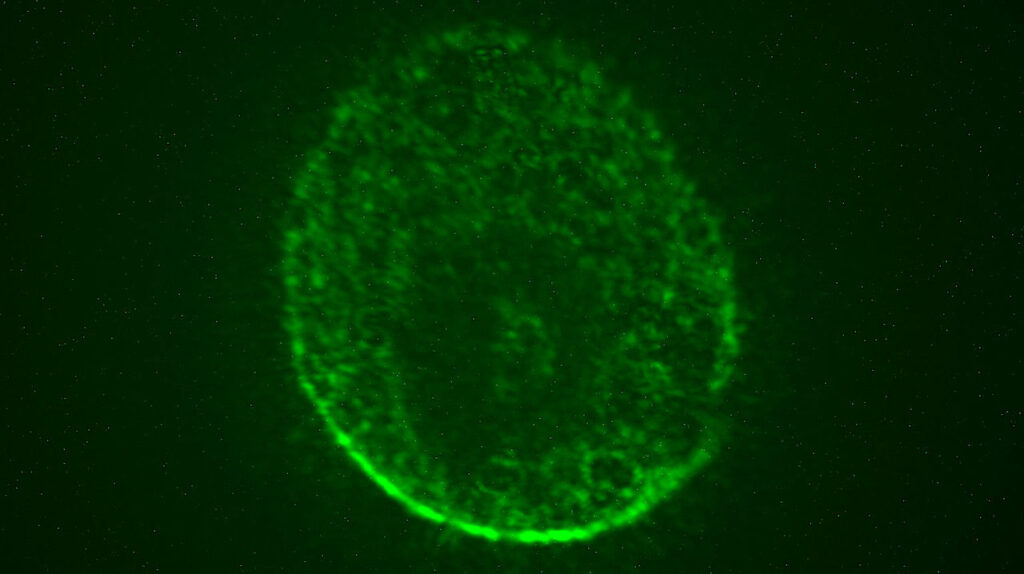Advances in Extremophile Research: Biotechnological Applications through Isolation and Identification Techniques

Extremophiles, organisms thriving in extreme environments such as hot springs, deep-sea hydrothermal vents, and hypersaline ecosystems, have garnered significant attention due to their remarkable adaptability and biotechnological potential. This review presents recent advancements in isolating and characterizing extremophiles, highlighting their applications in enzyme production, bioplastics, environmental management, and space exploration. The unique biological mechanisms of extremophiles offer valuable insights into life’s resilience and potential uses in industry and astrobiology.
Extremophiles are microorganisms that inhabit a wide range of ecological niches across the globe, from polar regions and underground mines to oil fields and even the stratosphere [1]. They play a vital role in energy flux and biogeochemical cycles, with a particularly dominant presence in the world’s oceans, where their collective biomass surpasses that of multicellular marine organisms [2,3].
These microorganisms, which have existed for billions of years, represent a vast reservoir of genetic diversity with significant potential for applications in medicine and biotechnology. The study of extremophiles—found in extreme environments such as hot springs, deep-sea hydrothermal vents, polar ice, hypersaline lakes, and radiation-contaminated sites—has greatly enhanced our understanding of life’s resilience and adaptability [4].
The earth’s extreme environments challenge microorganisms to adapt through a range of sophisticated biochemical mechanisms, reflecting their unique ability to thrive under harsh conditions. Extremophiles, such as thermophiles and psychrophiles, showcase remarkable adaptability through distinct structural and molecular strategies.
Thermophiles, which survive at high temperatures, exhibit enhanced protein stability primarily through increased hydrophobic interactions, salt bridges, and more disulfide bonds, which collectively contribute to their protein thermostability [5]. Structural studies reveal that these organisms often have shorter loops, more compact structures, and a higher proportion of charged and aromatic amino acids that stabilize their proteins at elevated temperatures.
In contrast, psychrophiles adapt to cold environments by maintaining protein flexibility and increased entropy, facilitated by smaller, less bulky amino acid residues like glycine. Their proteins often feature more unsaturated fatty acids and fewer salt bridges, which enhance their functionality at lower temperatures.
Genomic adaptations also play a crucial role, with thermophiles displaying higher G + C content in their tRNA and DNA, contributing to the stability of RNA structures and enhancing their thermal resilience. Psychrophiles, on the other hand, have a higher tRNA content and exhibit structural adaptations that protect against cold-induced destabilization. These mechanisms underline the diverse strategies extremophiles employ to maintain stability and functionality across extreme temperatures, offering valuable insights for biotechnological applications and understanding evolutionary processes [5].
Exploiting the complex taxonomy of prokaryotes is essential for gaining insights into evolution, not only for investigating the conditions that define habitability on Earth but also for providing critical insights into astrobiology, suggesting how life might exist beyond our planet [6].
Extremophiles, by thriving under extreme conditions, help define the environmental thresholds that support life, offering valuable information on adaptive responses and survival strategies.
This review explores the diverse sources of extremophiles, their ecological significance, and the advancements in sampling and isolation techniques that have revealed their remarkable diversity. It also highlights their emerging applications in biotechnology, including their potential use in bioremediation and as sources of novel biomolecules in pharmaceutical and industrial processes [7].
From the boiling waters of geothermal pools to the icy expanses of polar regions, extremophiles offer a window into the early conditions of life on Earth and promise new avenues for technological innovation as research in this field continues to advance [8].
Advances in Extremophile Research: Biotechnological Applications through Isolation and Identification Techniques, Pub Date: 2024-09-23, DOI:10.3390/life14091205 Giovanni Gallo, Martina Aulitto (open access)
Astrobiology








